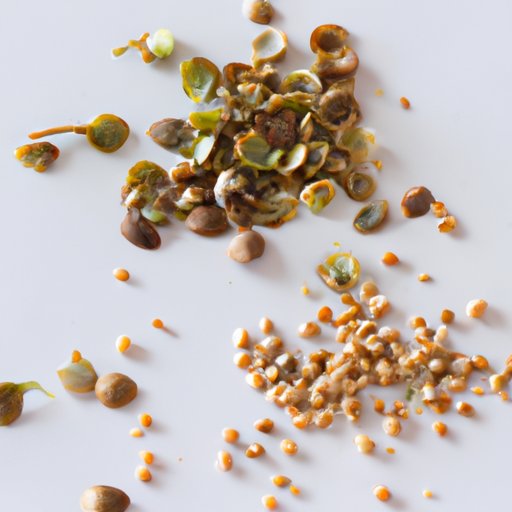
Introduction
Tomatoes are a staple in most gardens and kitchens. They are easy to grow, versatile in recipes, and packed with nutrients. Did you know that you can save tomato seeds from your garden harvest and grow your own plants year after year? Saving tomato seeds not only saves you money, but it also helps preserve biodiversity by ensuring that unique varieties are not lost. In this guide, we will cover everything you need to know about saving tomato seeds, including the best varieties, DIY tools, benefits, tips, and tricks.
Step-by-Step Guide to Saving Tomato Seeds
The first step to saving tomato seeds is to select the right tomato. Choose a healthy, ripe, and disease-free tomato from your harvest. The tomato should be fully mature and have a soft, juicy flesh with mature seeds. Follow these simple steps:
1. Cut open the tomato and scoop out the seeds into a clean container.
2. Add water to the container and stir gently. The pulp will rise to the top.
3. Cover with a lid or plastic wrap and leave it at room temperature for 2-3 days.
4. Once bubbles form on top, remove the pulp and seeds that float to the surface.
5. Rinse the remaining seeds in a fine mesh strainer under running water.
6. Spread the seeds on a paper towel to dry completely.
7. Store dried seeds in a labeled envelope or jar in a cool, dry place.
Best Varieties of Tomatoes for Seed Saving
Not all tomato varieties are created equal when it comes to seed saving. Some varieties do not produce true-to-type offspring, while others are more prone to disease. Here are some of the best tomato varieties for seed saving:
1. Heirloom tomatoes: These are open-pollinated varieties that have been around for generations. They are known for their unique colors, shapes, and flavors. Examples include Brandywine, Cherokee Purple, and San Marzano.
2. Paste tomatoes: These are meaty tomatoes that are great for sauces and canning. They have fewer seeds and less water content, making them easier to save. Examples include Roma, Amish Paste, and Opalka.
3. Cherry tomatoes: These small, sweet tomatoes are easy to grow and perfect for snacking. They also produce a lot of seeds and are less prone to disease. Examples include Sweet Million, Sun Gold, and Black Cherry.
DIY Tools for Tomato Seed Saving
Saving tomato seeds requires simple tools you probably already have in your kitchen. Here is a list of items you will need:
– Bowl or container
– Water
– Spoon
– Fine mesh strainer
– Paper towel
– Envelope or jar for storage
To make the process faster and easier, try these tips:
– Use a dedicated bowl or container for seed saving.
– Use a strainer with a handle to make rinsing easier.
– Label your seeds with the variety and date harvested.
Benefits of Saving Tomato Seeds
Saving tomato seeds offers numerous benefits for both the gardener and the environment. Here are some reasons why you should start seed saving today:
1. Saved seeds are more resistant to diseases: Tomato plants that have adapted to your local soil and weather conditions are more resilient to pests and diseases.
2. You can grow better plants: Over time, saved seeds become acclimated to local conditions and produce more robust plants.
3. You can preserve biodiversity: Saving unique tomato varieties helps keep them from being lost to commercial hybridization.
4. You can save money: Buying tomato seeds every year can add up. By saving your own seeds, you can grow tomatoes for free.
Tips and Tricks for Saving Tomato Seeds
To improve your seed saving success rate, try these tips:
1. Choose your best plant: Choose the strongest and healthiest plant from your garden for seed saving.
2. Properly dry your seeds: Damp seeds can easily mold or develop diseases. Make sure your seeds are completely dry before storing them.
3. Test seed viability: Before planting saved seeds, test them for germination rates. Put ten seeds on a wet paper towel and place them in a zip-lock bag. Check after a week to see how many seeds have sprouted.
Conclusion
Saving tomato seeds is easy and fun. By following this comprehensive guide, you can grow your own unique varieties, preserve biodiversity, and save money. Be sure to choose the right tomato, use proper tools, and store your seeds correctly. Try these tips and tricks for seed saving success. Happy gardening!





